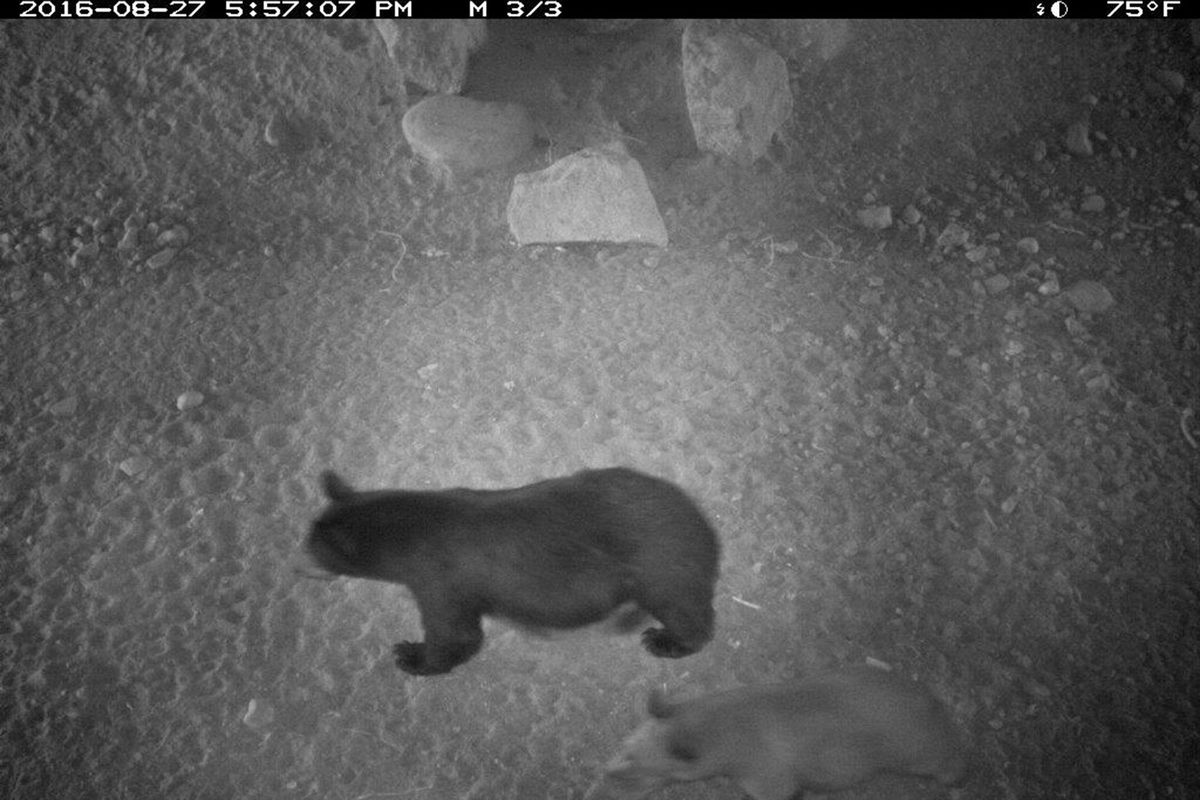Wildlife underpasses in North Idaho see heavy animal traffic

The photograph captured the cougar midstroll, with its powerful shoulders bunched and its black-tipped tail raised.
A motion-activated camera snapped the cougar’s photo last summer in a wildlife underpass on U.S. Highway 95. Biologists were thrilled to see the solitary predator using a safe route to cross the busy highway.
“This is the first time we got a picture of a cougar,” said Kara Campbell, the Idaho Department of Fish and Game’s regional wildlife biologist.
A dozen years ago, the Idaho Department of Transportation spent more than $1 million to build three wildlife underpasses north of Bonners Ferry when the highway was being widened. Rates of animal-vehicle collisions were already high in the area, and state transportation officials wanted to reduce the risk of future accidents.
Initial studies indicated animals were using the underpasses, but Fish and Game wanted to re-evaluate their effectiveness. Over several weeks in July, the cameras captured a parade of wildlife.
Campbell looked at more than 100 photos of deer and elk before she spotted the cougar. The images also showed a black bear and her cub, twin whitetail fawns, a skunk, bobcat, coyotes, snowshoe hares and even a domestic cat. While semis sped overhead, the animals sauntered underneath the four-lane highway, with most wildlife activity occurring at dawn and dusk.
The elk use alone “is pretty impressive,” Campbell said.
In other areas, elk have been willing to use wildlife overpasses built above highways but were reluctant to enter anything that looked like a dark cave. Since the U.S. 95 underpasses were built, brush has grown up around the entrances, which may make them more natural-looking and appealing to animals, Campbell said.
The vegetation provides hiding cover, so animals feel safer approaching the structure, she said.
The underpasses are about 14 miles north of Bonners Ferry, where state Highway 1 splits off from U.S. 95, an international freight route to British Columbia.
That area of rugged terrain in rural Boundary County is particularly rich with wildlife, said Wayne Wakkinen, Fish and Game’s regional wildlife manager.
Large numbers of deer and elk use the area for forage and winter habitat, and the landscape is also part of an east-west migration route. Wakkinen has trapped three grizzlies there while he was doing surveys of black bear populations. Moose are also common.
“The highway runs right through their range,” Wakkinen said.
Nationally and locally, wildlife collisions are a costly problem. They kill about 200 people each year in the United States and cause more than $1 billion in property damage, according to the Wildlife-Vehicle Collision Reduction Study.
“The human safety factor is hugely important,” Campbell said.
But the underpasses also benefit the state’s wildlife, which most Idaho residents cherish, she said. In addition to preventing animal deaths, the underpasses provide migration routes that keep populations from becoming genetically isolated, Campbell said.
That’s particularly true for bears and other animals that avoid approaching roads. Paternity tests for grizzlies and black bears in Canada’s Banff National Park found that male bears that used human-constructed wildlife crossings sired cubs over a larger geographical range.
When the Idaho Transportation Department rebuilt and rerouted parts of U.S. 95 north of Coeur d’Alene near Careywood several years ago, the design also included several wildlife underpasses.
Game trails and winter tracks were used to situate the underpasses, with fencing put up to help direct animals to the safe-crossing routes.
Preventing deer-vehicle collisions was the primary goal of those underpasses.
No studies have been done on their effectiveness, but that’s where Fish and Game’s motion-detection cameras might be deployed next, Campbell said. The photos will reveal how deer and some of the region’s seldom-seen wild animals are moving across the landscape.